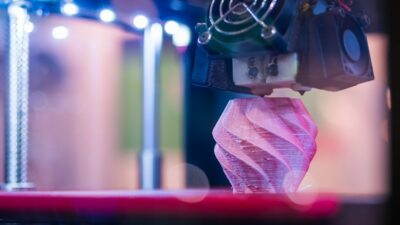Additive manufacturing is the new exciting way to manufacture all sorts of items, but it brings along with it a variety of national security concerns.
Additive manufacturing is the industry term for 3D printing. Subtractive manufacturing is what we would think of as the more typical form of manufacturing where you start with a block of something and chip away at it until you end up with what you need. With additive manufacturing, the item is built layer by layer resulting in far less waste than what subtractive manufacturing yields. This reduced waste allows businesses to produce parts at a lower cost than traditional subtractive manufacturing. Although quality is still a problem within additive manufacturing, it is improving daily.
When 3D printing was first introduced, it was mainly used to print very mundane things like toys. Now it has a wide array of applications including cars, rocket engine parts, organs, molecules, prosthetic limbs, basketball shoes, food, and a multitude of others.
A few years ago, blueprints for firearms began showing up on the internet allowing anyone with a 3D printer to build his or her own firearm at home, creating a dangerous web of unregistered firearms and prompting the U.S. Department of State to gently remind citizens that publishing such technical data is a violation of the U.S. International Traffic in Arms Regulations (ITAR). As additive manufacturing has progressed from plastics to metals and beyond, national security concerns have broadened as well. We are now concerned that individuals may obtain access to highly classified parts for defense operations and reproduce those parts. This threatens our military and industrial technologies.
There are also concerns that hackers could gain access to the blueprint for a piece of military technology and change a few lines of code that would allow the machinery to look correct when printed, but cause it to fail during its use, potentially killing our own soldiers. The U.S. military is already using additive manufacturing to produce grenade launchers and other weapons. We are only steps away from our adversaries using the same technology to produce the next step up from improvised explosive devices, possibly suicide attack drones.
Currently, most of the metal powders used in additive manufacturing are controlled by the Commerce Control List (CCL) under Export Control Classification Number (ECCN) 1C002. The State Department is currently reviewing whether the software involved in additive manufacturing should also be controlled and whether other controls are necessary related to additive manufacturing.
Ultimately, additive manufacturing is an exciting new industry tool, but with every new development new security risks ultimately follow. The U.S. is not currently the world leader in additive manufacturing machines, so a multi-lateral approach to controls would be prudent so that any concerns can be addressed on a global scale.



























